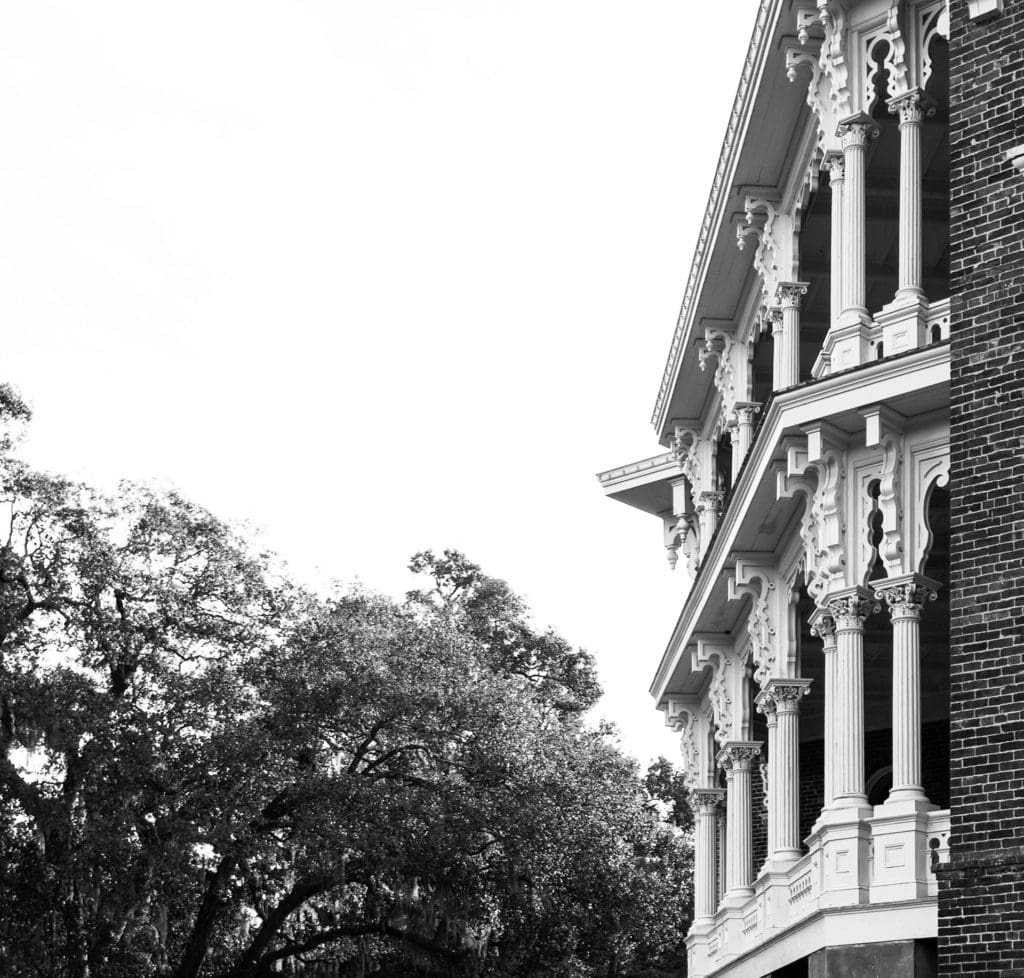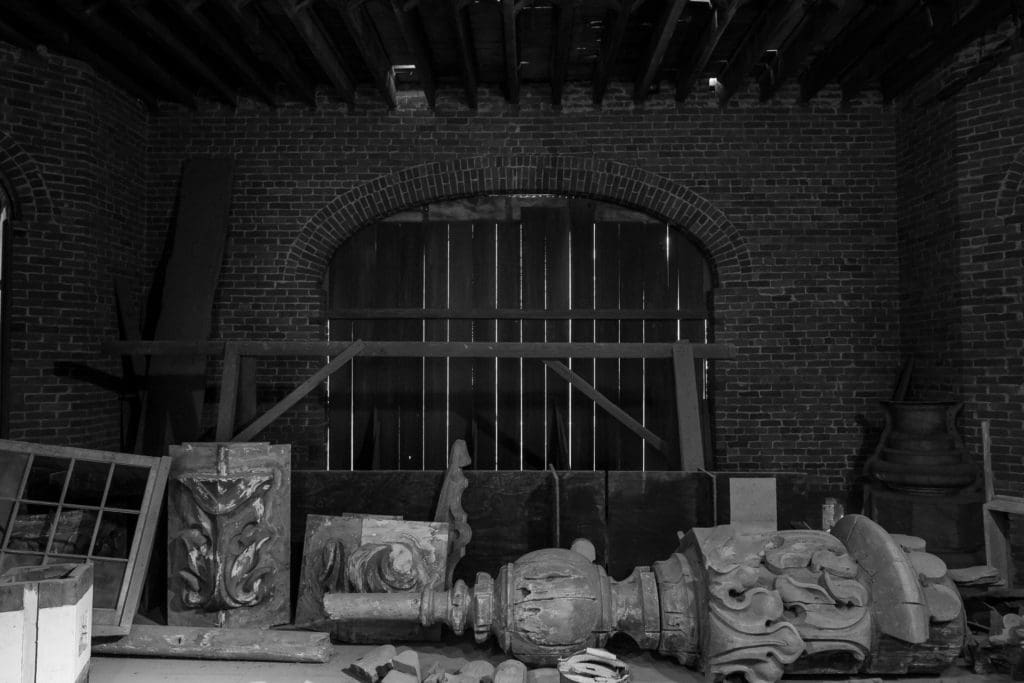Longwood Mansion – Natchez, MS
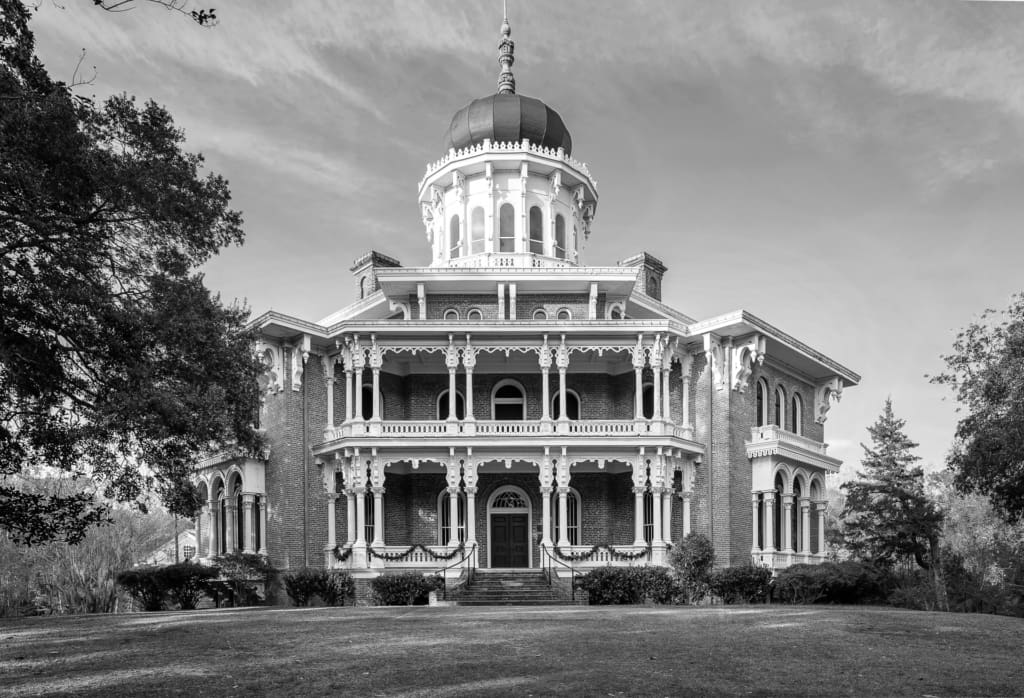
Longwood Mansion is an architectural wonder. A rare example of the Oriental Revival Style in the South, Longwood is the largest Octagonal Home in the United States and is also the only unfinished antebellum home in existence.
You wouldn’t know it by driving the streets of Natchez today, but the city was once extremely wealthy. In 1850, over half of the millionaires residing in the United States called Natchez home. This fact blew my mind. Some 600 homes in Natchez are listed on the National Register of Historic Places and, according to the 1860 census, Natchez had more millionaires per capita than anywhere in the United States; more than New York, Boston, Washington D.C. or even San Francisco just 5 years after the Gold Rush.
Building Longwood
Haller Nutt was a wealthy plantation owner in the Antebellum South. Son of Dr. Rush Nutt, an agricultural genius and citizen of the now-ghost-town of Rodney, MS, Haller set out to build a spectacular show home of magnificence and oppulence that was second to none. In other words, Haller Nutt and his wife Julia were supremely wealthy and they wanted everyone to know it.
At the apex of his wealth in 1860, Nutt owned over 40,000 acres of land, 800 slaves, and had a total estimated net worth of $3,000,000. Adjusting for inflation, that would be worth nearly $100,000,000 in 2019.
Nutt sought out noted Philadelphia architect Samuel Sloan to build his dream home. In 1859, Sloan accepted the commission and began designing the mansion with strict instructions to “make it the biggest and most beautiful home you’ve ever designed.”
The task took Sloan several months, but he did as he was asked and designed Longwood to contain six stories, 32 rooms, 26 fireplaces, 24 closets, 13 stairways, 115 doors, 125 windows, 120 columns, smoking room, billiards room, nurseries, banquet halls, a sunroom, a solarium an observatory, and so much more to equal a stunning 30,000 square feet of luxury. To put things in perspective a bit more, after all was said and done, the massive mansion required over one million total bricks.
Interesting Fact: Samuel Sloan was also the architect for several other now-haunted places in the South. Those include: Dunleith in Natchez, the Jemison-Van De Graaff Mansion and Bryce Hospital in Tuscaloosa, Winter Place in Montgomery, and many insane asylums.
Construction began in 1860 as Sloan sent contractors from Philadelphia to direct the work of the paid employees and slaves. War rhetoric was on the tips of everyone’s tongues, but Nutt believed war would never happen. A staunch Unionist, he disagreed with secession and thought that if there were war, it would be a quick affair and business would return to normal. Due to this belief, he continued construction on Longwood.
Also built on the property were a detached kitchen, a carriage house, and a 3-story brick building known as the servant’s quarters. A more appropriate name would be the slave’s quarters. The slave’s quarters housed as many as 32 slaves who would work in the Nutt home as maids, nannies and cooks.
The exterior construction had just completed when Mississippi seceded from the Union. Upon the news, Northern workers rushed off the site in an effort to quickly make it home. Tools were strewn about the mansion and, in fact, weren’t moved for years. With no workers remaining, Nutt had slaves complete construction of Longwood’s basement. That way, the Nutt family would have a place to stay while they rode out the war.
As a northern sympathizer, Nutt was awarded papers to protect his properties from the ravages of war. They made little difference. While Longwood was spared, several of Nutt’s other plantations, fields and stores were burned and plundered by North and South alike. All totaled, it is estimated that Nutt lost over 1/3 of his wealth. After the war, suit was filed against the United States government on behalf of the Nutt family. The Nutts won and were awarded $180,000.
Three years into the war, Nutt’s Longwood had become a joke to the town (I’m sorry. I’m childish. I couldn’t go the entire article without using that line). Nutt’s timing was awful. The home would never be finished. Also, being a Union sympathizer didn’t help matters with the townspeople and Longwood became known as Nutt’s Folly.
The broke and busted Nutts (I’m done, I promise) lived out their days in the basement of Longwood. That wasn’t very long for Haller. At 48 years old on June 15, 1864, Nutt died in the basement of Longwood, never seeing the end of the war he thought would be such a short endeavor. The official cause of death was pneumonia, but many believe that the pneumonia was brought on by perpetual depression and stress. In other words, Nutt died of a broken heart knowing that Longwood would never be completed. He had spent his final days walking the gardens almost as if distancing himself from the incomplete interior.
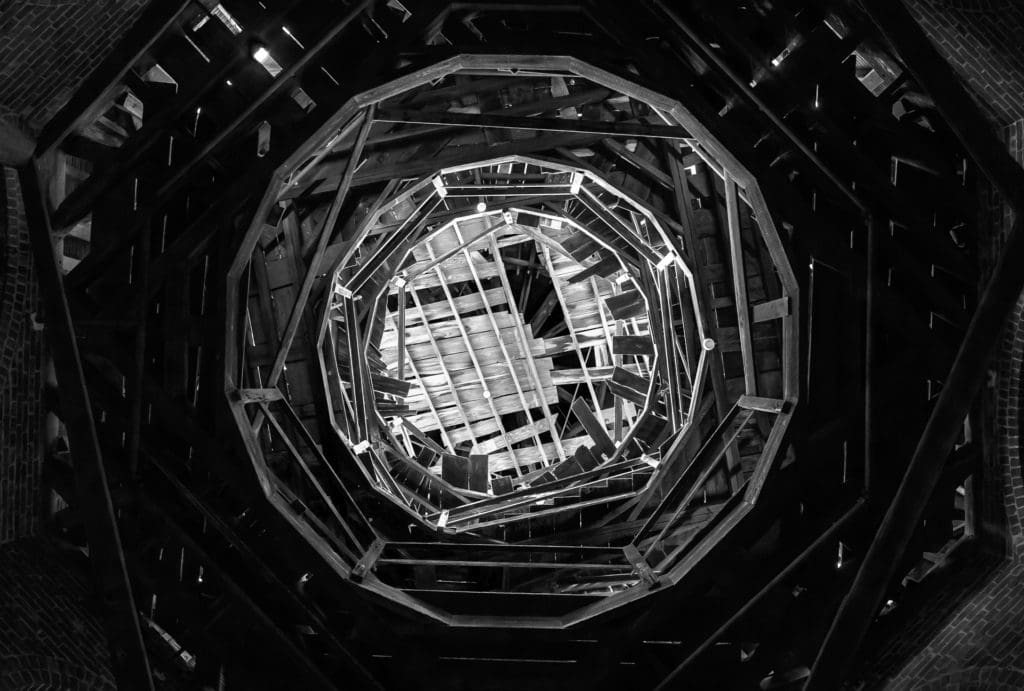
From the main floor, looking up at the rotunda.
Three Nutt children didn’t survive past childhood. Julia passed in 1897, also in the basement, and was buried beside her husband in the Longwood family cemetery. The Nutt family owned Longwood until 1968. That’s when, as legend holds, the home was donated to the Pilgrimate Garden Club with the caveat that it never be restored or finished. The family wanted the home to serve as a reminder to everyone of “what those Yankees did to us.”
Interesting Fact: Also buried in the cemetery is a slave that grew up with Haller Nutt. The slave (I’m unsure of his name) stayed with the Nutt family long after he was freed. The slave’s painted portrait is on the wall in the basement, one of only two commissioned oil paintings of a slave in existence.
Interesting Fact #2: In 2010, Longwood was used in the HBO series True Blood. Russell Edgington was the Vampire King of Mississippi and Louisiana. The exterior images used of his Jackson, Mississippi mansion were actually those of Longwood.
Longwood is now open to the public daily for tours and events.
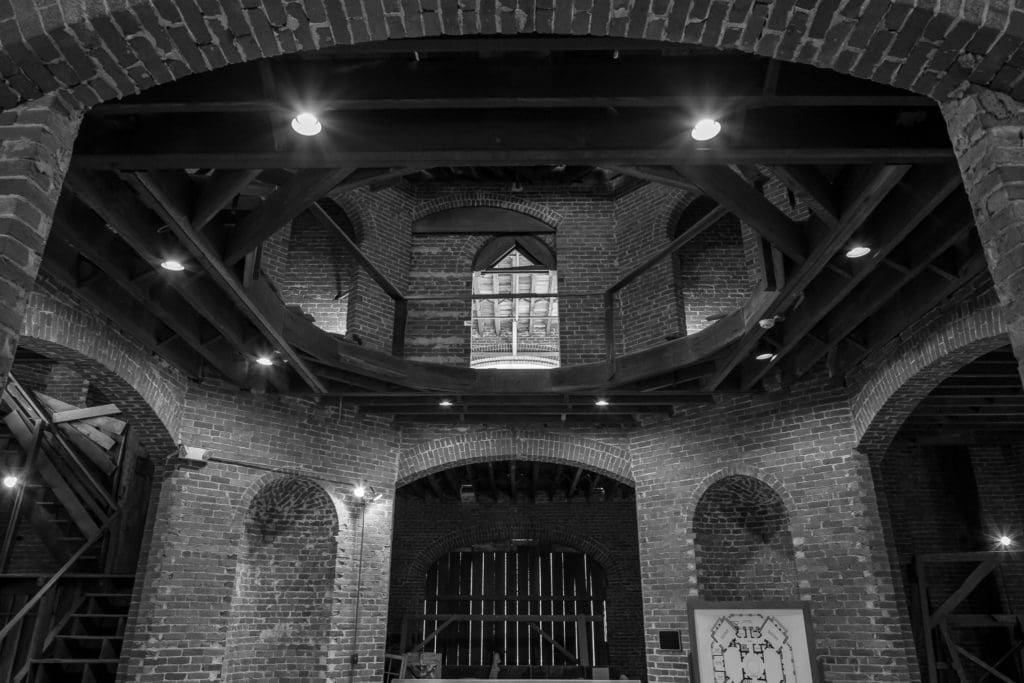
Interior of the main floor
The Hauntings
Longwood is a very unique place. From a historical and architectural perspective, it’s second-to-none. That’s why it’s no surprise that there are many stories of hauntings associated with the place. The most common stories are associated with Haller and Julia. Julia is often seen walking the unfinished stairs as if planning the next stage of construction. Haller is often seen in the gardens, pacing the floor, or sitting in a chair.
By far, the most common experience at Longwood is our guests commenting about the smell of roses. It happens all the time. Most of them are shocked when we tell them that Julia loved roses. She had maintained massive rose gardens with numerous varieties of roses. She was also known to wear rose-scented perfume with regularity.
When I first started working at Longwood, I would be the first to get there. Occasionally, I would walk into the home to find children’s furniture and toys strewn all over the place. It startled me the first few times it happened, but I learned to accept it and appreciate it.
Louise Burns was the resident manager at Longwood for almost 30 years. Just after the home had opened to the public, she was sleeping in the Nutt’s bed and was awoken by something…or someone lifting her head and neck above the pillow and slowly turning it side to side. Louise was positive that she was awake and that it wasn’t a dream. To her, it was just Julia inspecting the person sleeping in her family’s house.
One of our groundskeepers were mowing the yard. After quite some time and well after the work should have been done, I still heard the lawnmower. Curious, I looked for the groundskeeper and didn’t find him. He didn’t return the next day…..or the next. Pay day rolls around and he still doesn’t show up. When we finally tracked him down, we asked what happened. He told us that he was mowing the lawn and noticed a man standing by the tree watching him. He looked more closely and realized that the man was wearing “old-timey” clothes. “I did the only thing I knew to do. I got scared and ran.”
I was giving a tour to a group of people one day. I was new, so I didn’t have all of the history perfect just yet. I made a mistake telling the story in one of the rooms and the lights started flickering on and off. A little bit later, in another room, I made another mistake. Before I could correct myself, the lights started flickering again. It was then that I realized the lights were only flickering in the room I was in….not all over the house like I had suspected.
My wife and I went on a tour of Longwood. It was just us and the tour guide. About half-way through, we all heard footsteps pacing the floor above us. We went upstairs to investigate and no one was there.
If you have any additional stories related to Longwood, please share in teh

